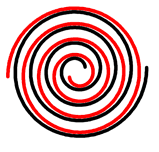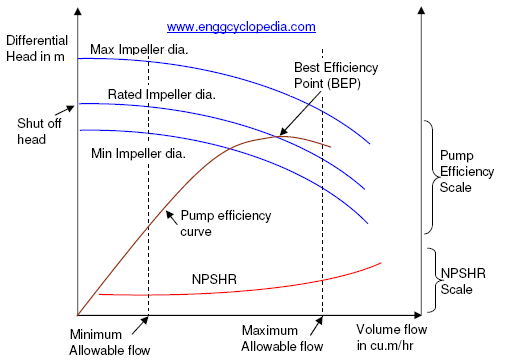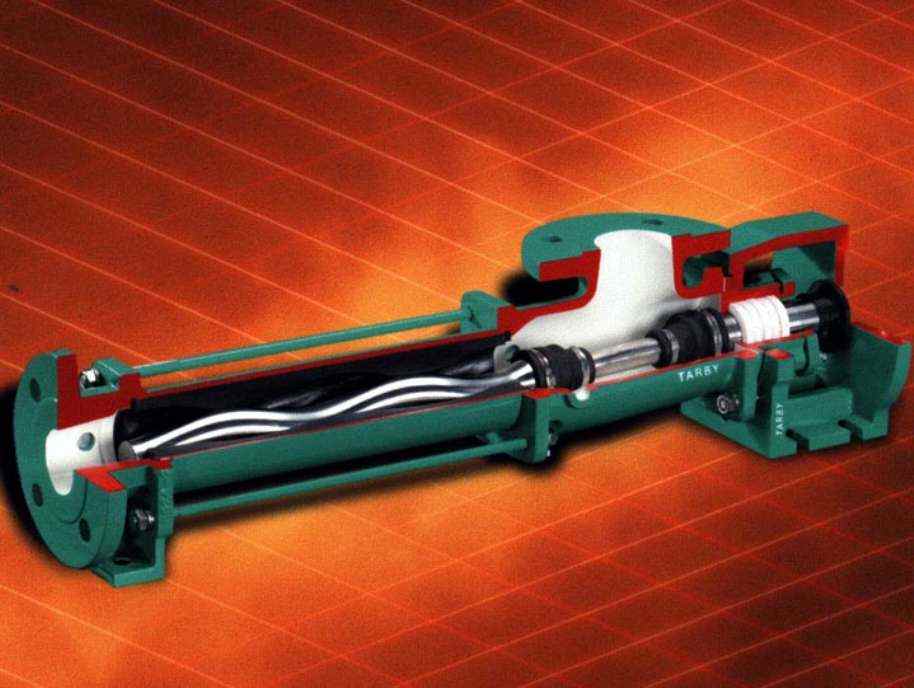A vacuum pump is a type of pump device that draws gas particles from a sealed volume in order to leave behind a partial vacuum. These pumps have a wide range of applications, including in chemical and pharmaceutical manufacturing, electronics, and medical industries. There are several types of vacuum pumps, such as rotary vane, diaphragm, scroll, liquid ring, reciprocating, screw, and gear pumps, each with its unique characteristics, advantages, and limitations. Study everything about vacuum pumps in this post.
Table of content:
What is a vacuum pump?
Types of vacuum pumps
How does a vacuum pump work?
Parts of vacuum pump
What is a vacuum pump?
A vacuum pump is a device that removes gas molecules from a sealed volume to create a partial or near-total vacuum. The purpose of a vacuum pump is to reduce the pressure inside a closed system to create a vacuum, which has a wide range of industrial, scientific, and medical applications.
Atmospheric pressure is important for vacuum pump operation because it affects the energy needed to run the pump. The higher the atmospheric pressure, the more efficiently the vacuum pump can work. The cost of operating a vacuum pump can depend on factors like temperature, humidity, and altitude.
Different types of vacuums can be created, ranging from low to high pressure. Low and medium vacuums are commonly used in industrial applications like vacuum cleaners, incandescent bulbs, and vacuum furnaces. Higher vacuum systems are used in laboratory applications like particle reactors and accelerators.
Vacuum pumps work by either mechanically removing gas molecules or capturing them through various principles such as condensation, sublimation, adsorption, ionization, etc.
Types of vacuum pumps
There are several types of vacuum pumps available, each with its own advantages and disadvantages depending on the specific application. Here are some of the most common types discussed.
Positive displacement vacuum pumps
Positive displacement pumps operate by trapping a certain volume of gas and then expelling it to create a vacuum. This is typically done by using a rotating or reciprocating mechanism that alternately expands and contracts a chamber.
1. Reciprocating vacuum pumps
These pumps contain chambers that enlarge and shrink due to their back-and-forth or reciprocating motion. The distance traveled by the moving parts is referred to as the "stroke." Reciprocating pumps feature two one-way valves, one for the inlet and the other for the exhaust. These valves open and close alternately, creating a vacuum and expelling the fluid. There are three primary kinds of reciprocating vacuum pumps: piston, plunger, and diaphragm vacuum pumps.
Reciprocating Piston Vacuum Pump: Reciprocating piston vacuum pumps use a piston to compress and expand gas to create a vacuum. They are often used in industrial applications. Piston pumps operate by using a piston that alternately compresses and expands a gas chamber to create a vacuum. They are typically powered by an electric motor or a hand-crank.
Plunger Vacuum Pump: The plunger vacuum pump functions similarly to the reciprocating piston pump. It consists of a solid, long cylinder-shaped plunger or piston that is typically constructed from ceramic material with a durable coating. Unlike piston pumps where the seal is connected to the piston, the extended shape of the plunger allows for the high-pressure seal to remain fixed in relation to the cylinder. This design feature enables the use of more sophisticated sealing mechanisms. Therefore, plunger vacuum pumps are better suited for challenging conditions compared to piston vacuum pumps.
Diaphragm Vacuum Pump: Diaphragm pumps use a flexible diaphragm to create a vacuum. They are often used in medical and laboratory applications. Diaphragm pumps operate by using a flexible membrane that expands and contracts to create a vacuum. The diaphragm is typically driven by an electric motor or a hand-crank.
2. Rotary vacuum pumps
These vacuum pumps function by creating areas of reduced pressure through the movement of their components against the pump housing. The surfaces where the rotor and housing meet have very little space between them, and they are coated with materials that are self-lubricating or have low friction properties like PTFE, PEEK, or graphite. This small space prevents fluid from leaking into the low-pressure area. In comparison to reciprocating pumps, rotary vacuum pumps produce less fluctuation in their delivery, resulting in more continuous flow. However, they are not ideal for handling fluids containing abrasive substances that can erode the small spaces between the rotor and housing. Rotary vacuum pumps are categorized based on the rotor's design.
Rotary Vane Vacuum Pump: Rotary vane vacuum pumps are among the most common positive displacement pumps. They use a series of vanes that rotate inside a chamber, compressing and expanding gas to create a vacuum.
Liquid Ring Vacuum Pump: Liquid ring pumps have a similar function to rotary vane pumps but have a different design for their vanes. As previously stated, the vanes in rotary vane pumps can move in a radial direction, while in liquid ring vacuum pumps, the vanes are stationary and attached to the rotor. When the rotor rotates, the eccentricity of its motion causes the volume of cavities to increase, resulting in the liquid being drawn into the chamber. The liquid is held against the housing by centrifugal forces, creating a ring of liquid around the rotor, hence the name "liquid ring pump."
Rotary Piston Vacuum Pump: The rotary piston vacuum pump has an eccentric wheel as its rotor connected to a slide valve, allowing fluid entry during the intake stroke of one chamber while the other expels compressed fluid through an exhaust valve. This pump has two separate compression chambers and can be considered a double-acting, two-stroke pump.
Screw Vacuum Pump: Screw vacuum pumps utilize two intermeshing screws rotating in opposite directions to generate vacuum. The rotors trap and compress gas molecules, eventually forcing them through the pump's discharge port. They are more energy-efficient and produce less noise and vibration than other types of pumps, making them suitable for use in various applications.
Gear Vacuum Pump: Gear vacuum pumps use two gears, which mesh together, to generate a vacuum. The fluid is drawn into the pump and forced out through the discharge port as the gears rotate. These pumps are straightforward in design, low-maintenance, and relatively inexpensive. However, they are not suitable for applications requiring high vacuums or when handling high volumes of fluids.
Scroll Vacuum Pump:
Scroll pumps use a spiral mechanism to compress gas and create a vacuum. They are often used in semiconductor manufacturing. Scroll pumps operate by using a spiral mechanism that compresses and expands a gas chamber to create a vacuum. They are typically powered by an electric motor.
Momentum transfer vacuum pumps:
Momentum transfer vacuum pumps operate by using high-speed jets of fluid or gas to push gas molecules out of the system. Examples of momentum transfer pumps include diffusion pumps and turbomolecular pumps.
Diffusion Vacuum Pump:
Diffusion pumps operate by using a high-speed jet of oil vapor to push gas molecules out of the system. The oil vapor and gas molecules then condense onto a cold surface, creating a vacuum.
Turbomolecular Vacuum Pump:
Turbomolecular pumps, use a series of rapidly spinning blades to accelerate gas molecules and create a low-pressure region.
Entrapment vacuum pumps:
Entrapment pumps operate by capturing gas molecules by adsorbing them on a solid surface. Examples of entrapment pumps include cryopumps and ion pumps.
Cryopumps operate by cooling a surface to a very low temperature, causing gas molecules to condense and stick to the surface. Ion pumps operate by using an electric field to ionize gas molecules, which then stick to a surface due to electrostatic attraction.
Venturi vacuum pumps:
Venturi pumps use a high-speed fluid jet to create a vacuum. They are often used in air conditioning and refrigeration systems. Venturi pumps operate by using a high-speed fluid jet to create a low-pressure region. Gas molecules then flow into the low-pressure region, creating a vacuum.
Each type of vacuum pump has its own specific advantages and disadvantages, and the appropriate choice depends on the specific application and requirements of the system.
How does a vacuum pump work?
A vacuum pump is a device that removes gas molecules from a sealed volume to create a partial vacuum. There are different types of vacuum pumps, but they all work based on the same principle: removing gas molecules from a sealed space to reduce the pressure inside it.
One common type of vacuum pump is the rotary vane pump, which consists of a rotating chamber with vanes that trap gas molecules and move them to the exhaust port. The rotary vane pump works by creating a vacuum through a series of steps:
- The pump chamber is sealed off from the outside atmosphere.
- The vanes rotate, creating a series of expanding and contracting spaces within the pump chamber.
- As the space within the pump chamber expands, the pressure inside decreases, causing gas molecules to flow into the chamber.
- As the space within the pump chamber contracts, the pressure increases, compressing the gas molecules.
- The compressed gas molecules are then pushed out of the pump through the exhaust port.
Other types of vacuum pumps include the diaphragm pump, the scroll pump, and the turbomolecular pump, each of which operates on a slightly different principle but all serve to remove gas molecules from a sealed space to create a vacuum.
Vacuum pump uses
These pumps are commonly used in many industrial, scientific, and medical applications where a low-pressure environment is required.
Some of the common uses of vacuum pumps include:
- In refrigeration and air conditioning systems: Vacuum pumps are used to remove moisture and air from refrigeration and air conditioning systems, which can help prevent corrosion and improve the efficiency of the system.
- In manufacturing: Vacuum pumps are used to create a low-pressure environment for various manufacturing processes, such as semiconductor fabrication, vacuum coating, and vacuum drying.
- In scientific research: Vacuum pumps are used to create a low-pressure environment for experiments in fields such as physics, chemistry, and materials science.
- In medical applications: Vacuum pumps are used in medical equipment such as dental drills and suction devices, as well as in vacuum-assisted delivery during childbirth.
Overall, vacuum pumps play an important role in many different industries and applications where a low-pressure environment is needed.
Parts of vacuum pump
The specific parts of a vacuum pump can vary depending on the type of pump and its design. However, some common parts of vacuum pumps include:
- Inlet and outlet ports: These are the openings through which gas enters and exits the pump.
- Pumping chamber: This is the part of the pump where gas is compressed and moved out of the pump.
- Rotor or impeller: This is the rotating part of the pump that moves gas molecules from the inlet port to the outlet port.
- Stator or housing: This is the stationary part of the pump that surrounds the rotor or impeller and helps to compress and move gas molecules.
- Seals and gaskets: These are used to prevent gas from leaking out of the pump and to maintain the pressure differential between the inlet and outlet ports.
- Motor: This is the part of the pump that provides the power to rotate the rotor or impeller.
- Control valves: These are used to regulate the flow of gas into and out of the pump, as well as to control the pressure within the pumping chamber.
These are just some of the common parts, and the specific components can vary depending on the type of pump and its intended use.






